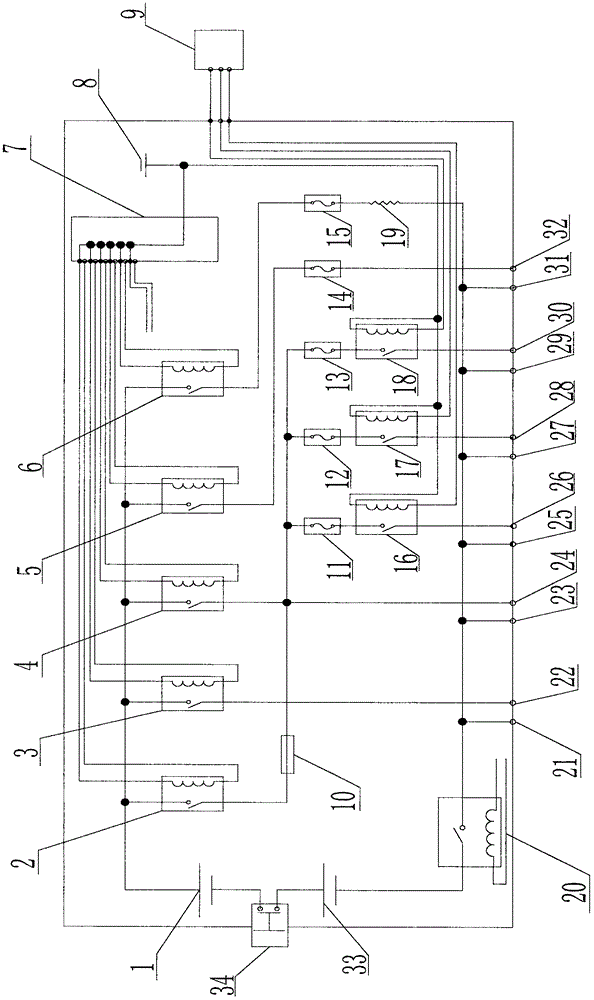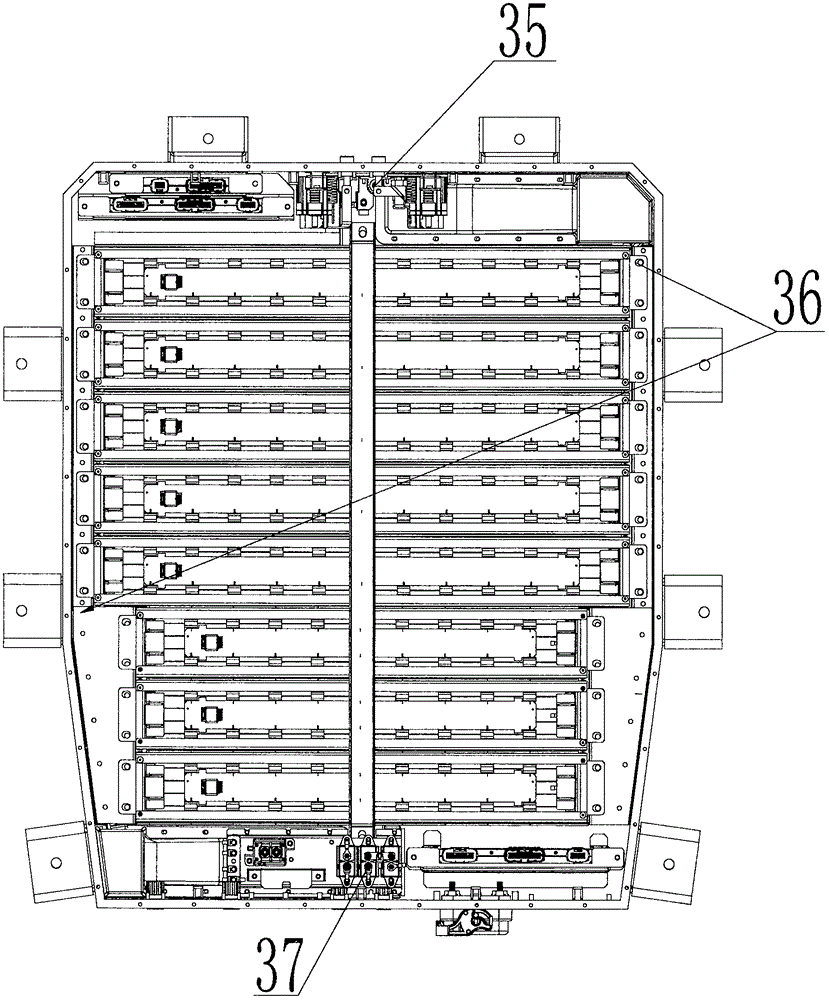Power battery and high-voltage distribution box integrated control system for blade electric vehicle
An integrated control system and pure electric vehicle technology, applied in the direction of electric vehicle charging technology, electric vehicles, battery/fuel cell control devices, etc., can solve the problems of cost difference and high cost of new energy components, so as to save installation space and reduce usage Quantity and use of wire harnesses, and the effect of reducing production costs
- Summary
- Abstract
- Description
- Claims
- Application Information
AI Technical Summary
Problems solved by technology
Method used
Image
Examples
Embodiment Construction
[0018] In order to have a clearer understanding of the technical features, purposes and effects of the present invention, the specific implementation manners of the present invention will now be described with reference to the accompanying drawings, in which the same reference numerals represent the same components. In order to keep the drawings concise, each drawing only schematically shows the parts related to the invention, and they do not represent the actual structure of the product.
[0019] Such as figure 1 , 2, 3, 4, 5, and 6, the present invention is an integrated control system for a pure electric vehicle power battery and a high-voltage distribution box, including a battery pack lower case body 40 with a battery pack installed inside, and a battery pack lower case case The body 40 uses the battery pack upper case cover 38 to seal the battery pack and realizes fixing with the whole vehicle through the battery pack fixing bracket 39. The battery pack lower case body ...
PUM
 Login to View More
Login to View More Abstract
Description
Claims
Application Information
 Login to View More
Login to View More - R&D
- Intellectual Property
- Life Sciences
- Materials
- Tech Scout
- Unparalleled Data Quality
- Higher Quality Content
- 60% Fewer Hallucinations
Browse by: Latest US Patents, China's latest patents, Technical Efficacy Thesaurus, Application Domain, Technology Topic, Popular Technical Reports.
© 2025 PatSnap. All rights reserved.Legal|Privacy policy|Modern Slavery Act Transparency Statement|Sitemap|About US| Contact US: help@patsnap.com



